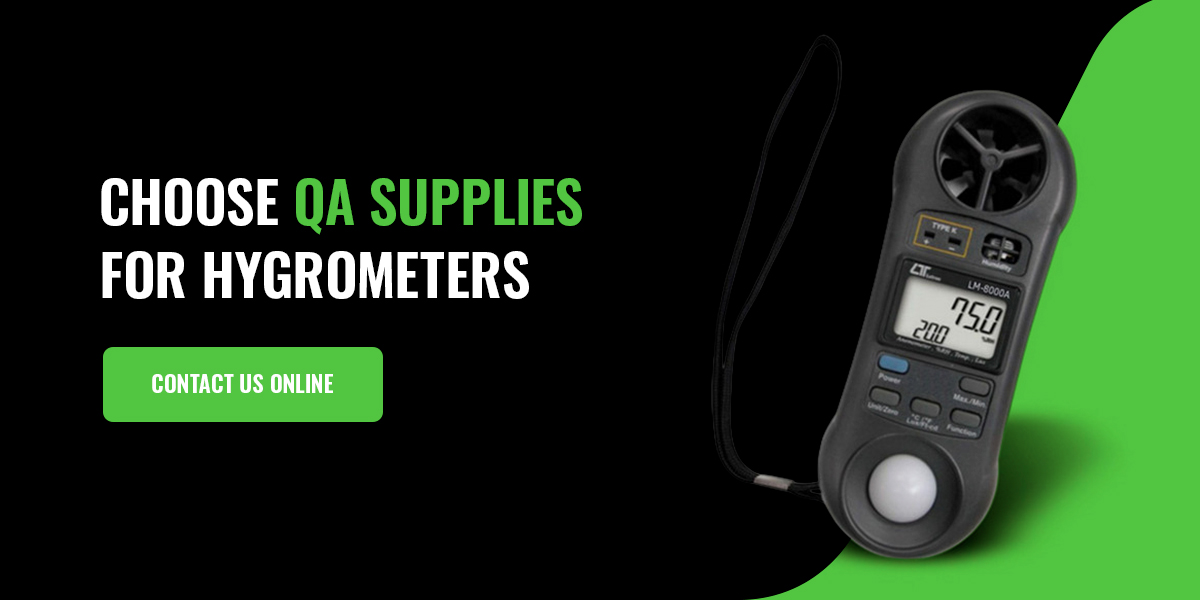Hygrometer vs. Hydrometer
Apr 26th 2023
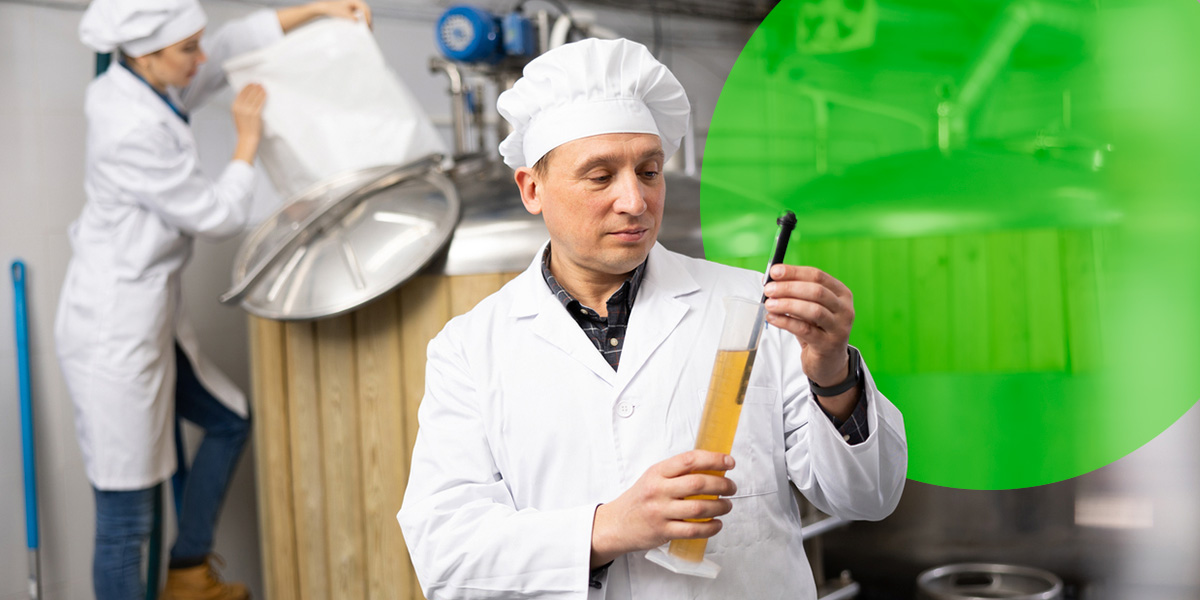
- What Is a Hygrometer?
- What Does a Hygrometer Measure?
- How Does a Hygrometer Work?
- How to Use a Hygrometer
- What Is a Hydrometer?
- What Does a Hydrometer Look Like?
- How Does a Hydrometer Work?
- The Difference Between Hygrometers and Hydrometers
- Choose QA Supplies for Hygrometers
Hygrometers and hydrometers are two measuring instruments used in several industries to help with quality control and consistency. The food industry relies on these tools to maintain standards throughout its production process. Without high-quality measuring tools, ensuring their products retained the correct standards and quality would be much more difficult.
While they serve different purposes, both enhance the quality and consistency of the food and beverage industry's products. Understanding the differences between hygrometers vs. hydrometers allows you to evaluate the quality control process better and refine it for more precise standards and problem-solving techniques.
What Is a Hygrometer?
Hygrometers measure the humidity in the air. Humidity is the water vapor floating all around us — the more water in the air, the higher the humidity. There are lots of different hygrometers that each use a slightly different method to measure humidity. The measurement device will record evaporation rates, tension adjustments or other environmental changes to track the changing humidity. Its basic form is extremely old, but modern technology has allowed for more complex, accurate hygrometer development.
What Does a Hygrometer Measure?
Hygrometers measure humidity. Combination thermometers and hygrometers, or thermo-hygrometers, track an environment's temperature and humidity. Measuring these conditions ensures facilities keep their products at the right temperature and humidity. If conditions become too humid or warm, food can spoil, separate or mold. Without constant monitoring, facilities would see higher spoilage rates and wasted products. Ensuring your facility has accurate hygrometers can save you significant amounts of product and money long-term.
How Does a Hygrometer Work?
All hygrometers measure humidity, although they might use a slightly different method to achieve their results. A psychrometer is a popular type of hygrometer that has two thermometers. One thermometer, the wet-bulb thermometer, has one end wrapped in a damp cloth. The other dry-bulb thermometer has its end exposed to the air. The wet-bulb thermometer reads cooler since it has the wet cloth on it — the rate of evaporation from the cloth depends on the humidity. You get the humidity reading by combining the warmer dry-bulb measurements and cooler wet-bulb measurements.
How to Use a Hygrometer
Hygrometers are less involved to use than hydrometers. Since they take the readings for you using thermometers, changes in resistivity or hair tension, you simply need to attach them to the desired location or hold them in the area you want to measure. Once in place and activated, they will measure the humidity and provide you with a reading. Handheld hygrometers do not take long to get a reading from, while others — like psychrometers — can take up to several hours to produce the complete reading.
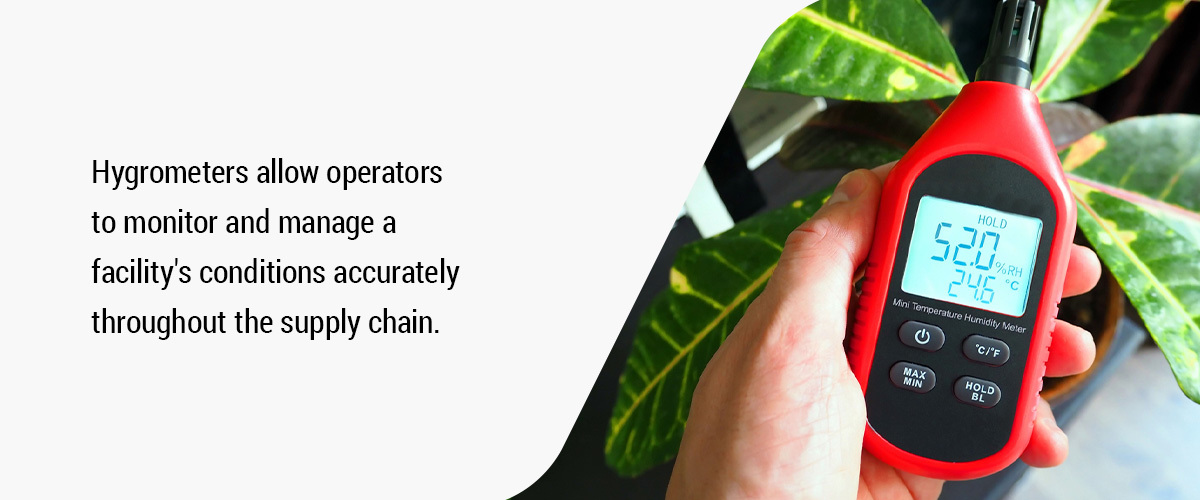
When to Use a Hygrometer
Humidity control supports the preservation and handling of food and fresh produce. Hygrometers allow operators to monitor and manage a facility's conditions accurately throughout the supply chain, including:
- Food storage and transport: Maintaining the right humidity during storage and distribution helps preserve freshness. For example, leafy greens need adequate humidity to stay crisp, while fruits like berries can shrivel in dry conditions. Portable handheld hygrometers allow users to check conditions in storage areas or during transit. These readings make it easier to detect changes in humidity and take corrective action before the product spoils.
- Distribution centers: Here, humidity monitoring supports food safety and operational efficiency. Stationary hygrometers provide continuous readings throughout a facility, so that different zones remain within their target humidity ranges.
- Greenhouse and grow rooms: In greenhouse and indoor grow environments, relative humidity can impact plant health and yield. Insufficient moisture can stress plants and slow their growth, while excessive humidity encourages mold and disease. Using a hygrometer allows growers to monitor the air and adjust ventilation or heating to maintain stable growing conditions.
- Labs and cleanrooms: Continuous humidity monitoring in food laboratories and cleanrooms helps prevent mold formation and ensures that product testing and research conditions remain consistent. Data logging hygrometers record humidity trends over time, which supports traceability and compliance with quality standards.
- Processing activities: Processing steps, such as drying or packaging, require consistent humidity to achieve uniform results. If the surrounding environment becomes too dry, products can lose moisture, which can alter their texture or weight. If the humidity is too high, microbial growth or clumping can occur. Stationary wall-mounted hygrometers provide continuous feedback, which helps operators monitor readings throughout the production day and ensure each product remains within target conditions.
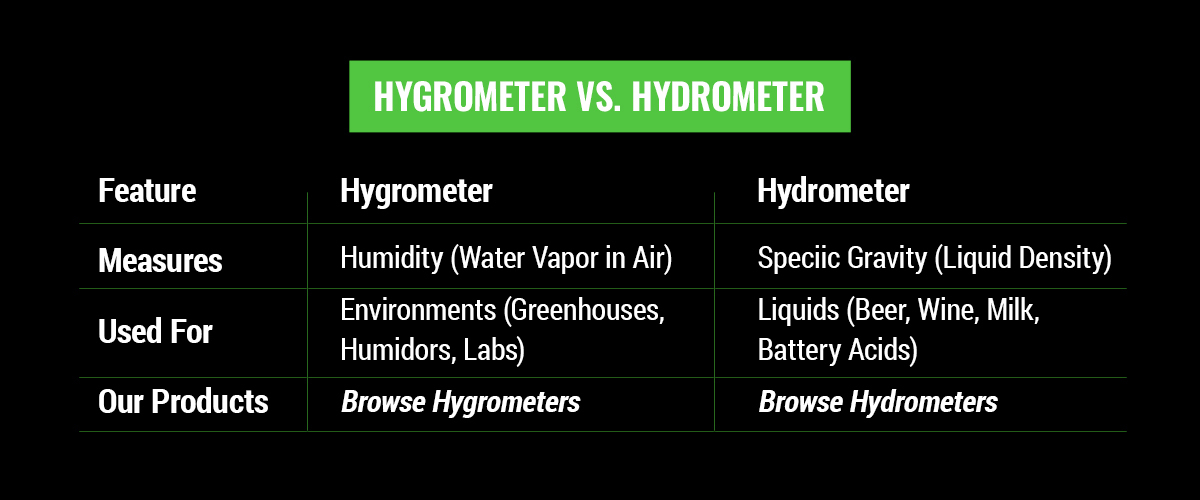
What Is a Hydrometer?
Hydrometers measure a liquid's specific gravity and density. Specific gravity is a measurement that lets you know how the weight of a liquid compares to an equal amount of water. Density tells you the quantity of something per volume — the denser the liquid, the more an object will float. Something like water is less dense, making it easier for the measuring device to sink, while a liquid like milk has water and other components that make it denser and easier for the device to float in.
What Does a Hydrometer Look Like?
Hydrometers consist of a small plastic or glass tube with a scale measuring specific gravity. One end is bulb-shaped with a steel or fin lead shot inside. This weight — or ballast — allows the hydrometer to float upright in a liquid. The hydrometer is placed in the sample liquid, and the spot on the scale that lines up with the liquid level tells you the liquid's specific gravity.
Additionally, hydrometers can be calibrated from different scales to measure other chemicals. Hydrometers can measure:
- Alcohol percentage by weight
- Pure sugar by weight
- The salt content in a solution
- Petroleum liquid densities
Different hydrometers will have different names depending on their measurement area. Since they come with several specialized options, make sure you're selecting the right hydrometer for the job. Know what you want to test and find the correct hydrometer for the job.
How Does a Hydrometer Work?
Using a hydrometer is straightforward. Simply place the hydrometer in a hydrometer jar with the liquid you wish to measure. Then, note the lowest point of the liquid's surface. Write down the measurement of the spit where the liquid's surface touches the hydrometer. Finally, check the solution temperature. The solution temperature should be the same as your hydrometer — if not, use the manufacturer's temperature correction table to adjust everything correctly.
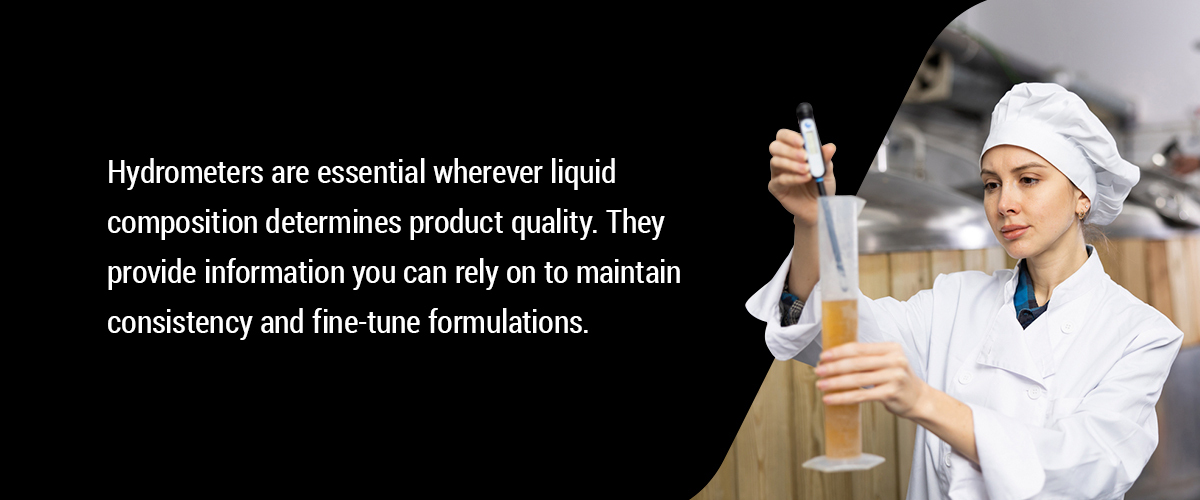
When to Use a Hydrometer
Hydrometers are essential wherever liquid composition determines product quality. They provide information you can rely on to maintain consistency and fine-tune formulations. You can use a hydrometer for:
- Brewing and winemaking: In brewing or winemaking, a hydrometer — or more specifically, a saccharometer — measures the sugar concentration in wort or grape juice. Sugar aids fermentation, so knowing how much is present allows you to predict the final alcohol content, control flavor and monitor the fermentation process.
- Dairy and liquid food production: In dairy and other liquid food processing, density measurements ensure that every batch meets established quality standards. Hydrometers are used to test dairy products and juices to confirm consistency, detect dilution and verify that formulations align with product specifications.
- Brining and pickling: In these applications, hydrometers are used to measure the concentration of salt or sugar in a brine solution. The density of that solution affects how quickly ingredients cure and how the final flavor develops.
- Canned fruit production: In canned fruit operations, hydrometers help maintain the correct syrup density. The syrup acts as a preservative and flavor carrier, and its density determines sweetness and product shelf life. Monitoring syrup density before and during canning helps you achieve the desired flavor and thickness.
The Difference Between Hygrometers and Hydrometers
The core difference between hygrometers and hydrometers is what they measure — hygrometers measure humidity, and hydrometers measure specific gravity, which tells you a liquid's density. Each device is a valuable tool for quality control and product monitoring, but they test different production areas.
Hygrometers are used throughout production and transport to ensure each area maintains the correct temperature and humidity levels. Many food and beverage products rely on their environment remaining cold with low humidity levels to protect them from mold, bacteria growth and separation. The hygrometer allows you to measure temperature and humidity in a given space by affixing it to a wall or carrying a portable device for on-the-go measuring.
Hydrometers are often used in the food and beverage industry for winemaking and brewing. Saccharometers — specialized hydrometers — check the wines' sugar content. A wine's sugar content directly affects its alcohol content, an essential aspect of every wine. Additionally, alcoholometers can measure a liquid's alcohol content, affecting the product of breweries and wineries.
Hygrometers and hydrometers are used differently to help with ensuring food and beverage products come out as desired. Without humidity and specific gravity measurements, facilities would not produce products that matched the level of quality or the different compositions they wanted.
Choose QA Supplies for Hygrometers
QA Supplies carries high-quality, portable hygrometers for better, more accurate humidity readings. Our durable instruments allow you to carefully monitor humidity levels to prevent spoilage and waste at your facility and during transport. We carry min-max hygrometers and psychrometers so you can find the right option for your needs. Choose from several models and get lasting, reliable hygrometers for an improved quality control experience.
If you're interested in getting the best harvesting, monitoring and inspection supplies for your company, check out our products today. Our on-site calibration laboratory ensures your instruments are up to standard so you can take the stress of accuracy off your shoulders. If you have any questions or want to know more about our products, contact us online to learn more.


